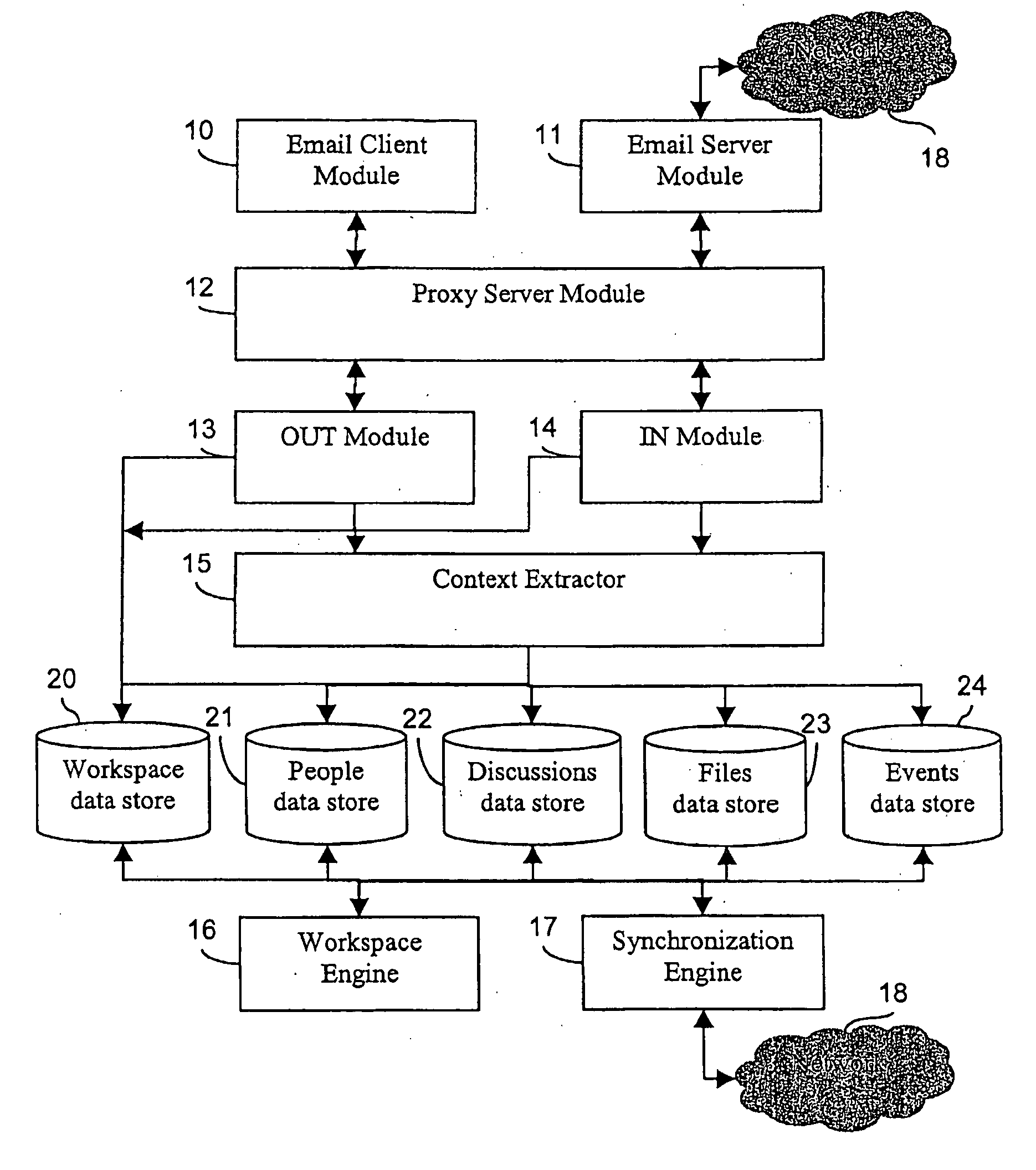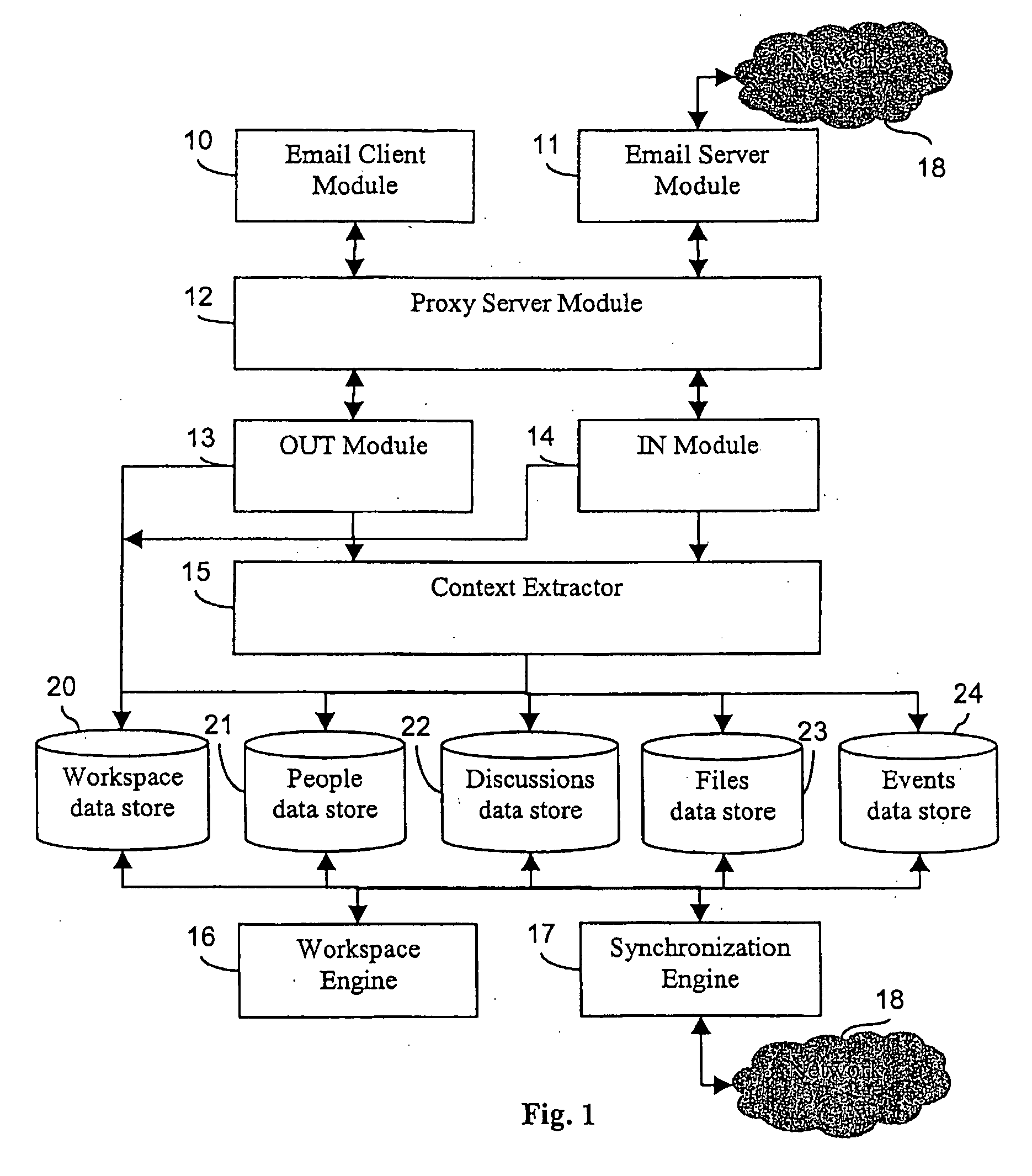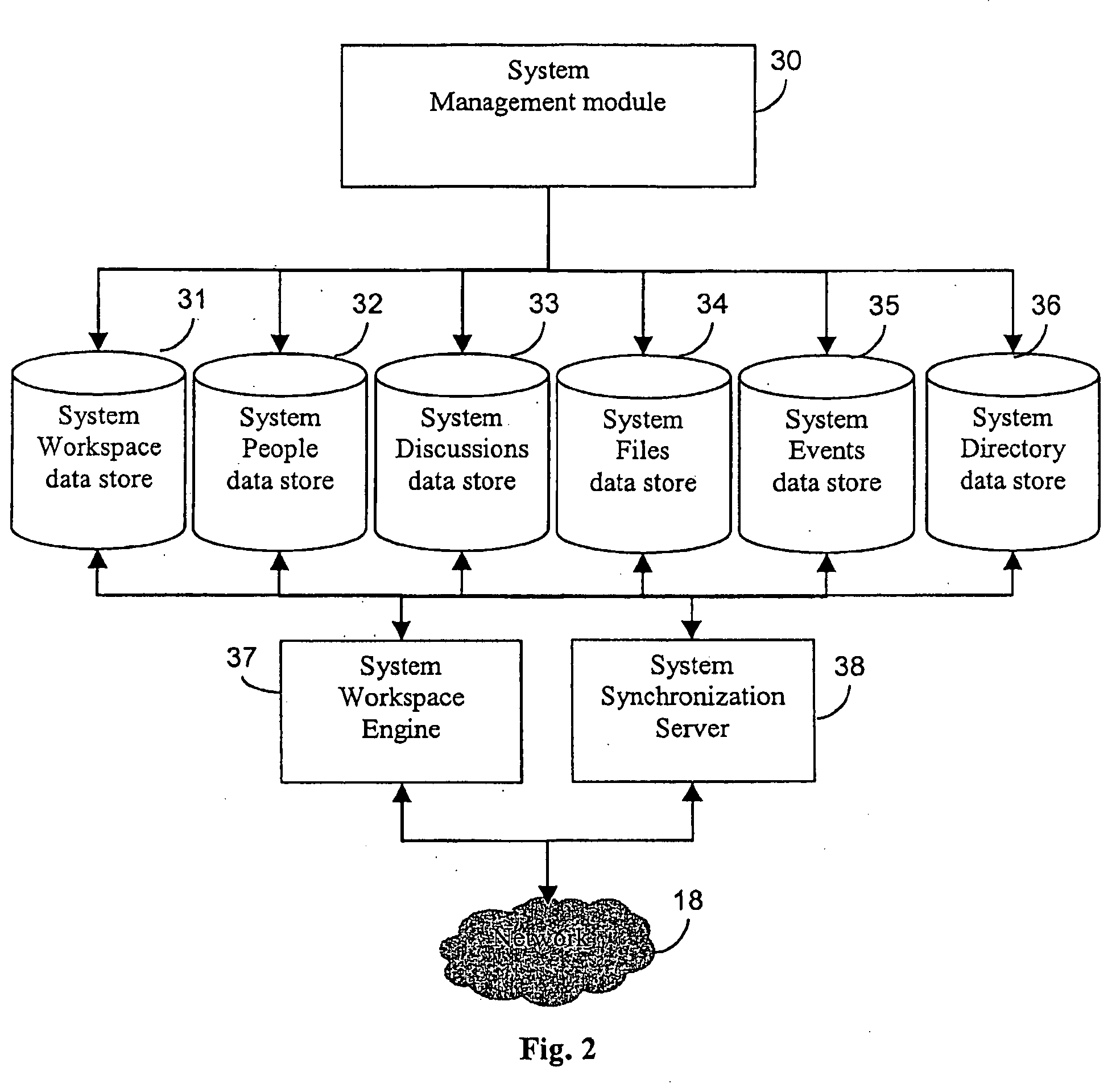Method of populating a collaborative workspace and a system for providing the same
a collaborative workspace and system technology, applied in the field of collaborative workspace population and system for providing the same, can solve the problems of high overhead, inconvenient setup of applications, and inability to achieve widespread use of collaborative applications
- Summary
- Abstract
- Description
- Claims
- Application Information
AI Technical Summary
Benefits of technology
Problems solved by technology
Method used
Image
Examples
Embodiment Construction
1. Exemplary Operating Environment
[0085]FIG. 1 is a block diagram illustrating an architecture overview of a user's operating system according to a preferred embodiment of the present invention. The system comprises an electronic mail (e-mail) client module 10, an e-mail server module 11, a proxy server module 12 linked to the client and server modules 10,11, an OUT module 13 linked to the proxy server module 12 and an IN module 14 also linked to the proxy server module 12. The system further comprises a context extractor 15 which receives data from the OUT and IN modules 13,14 and data stores for user-defined elements of the e-mail including Workspace, People context, Discussion context, Files context, and Events Context 20, 21, 22, 23, 24. All these data stores are then linked to a workspace engine 16 and a synchronisation engine 17.
[0086]The e-mail server module 11 interfaces with a communications network 18 to receive and send e-mail messages over the network 18, which is in the...
PUM
 Login to View More
Login to View More Abstract
Description
Claims
Application Information
 Login to View More
Login to View More - R&D
- Intellectual Property
- Life Sciences
- Materials
- Tech Scout
- Unparalleled Data Quality
- Higher Quality Content
- 60% Fewer Hallucinations
Browse by: Latest US Patents, China's latest patents, Technical Efficacy Thesaurus, Application Domain, Technology Topic, Popular Technical Reports.
© 2025 PatSnap. All rights reserved.Legal|Privacy policy|Modern Slavery Act Transparency Statement|Sitemap|About US| Contact US: help@patsnap.com



